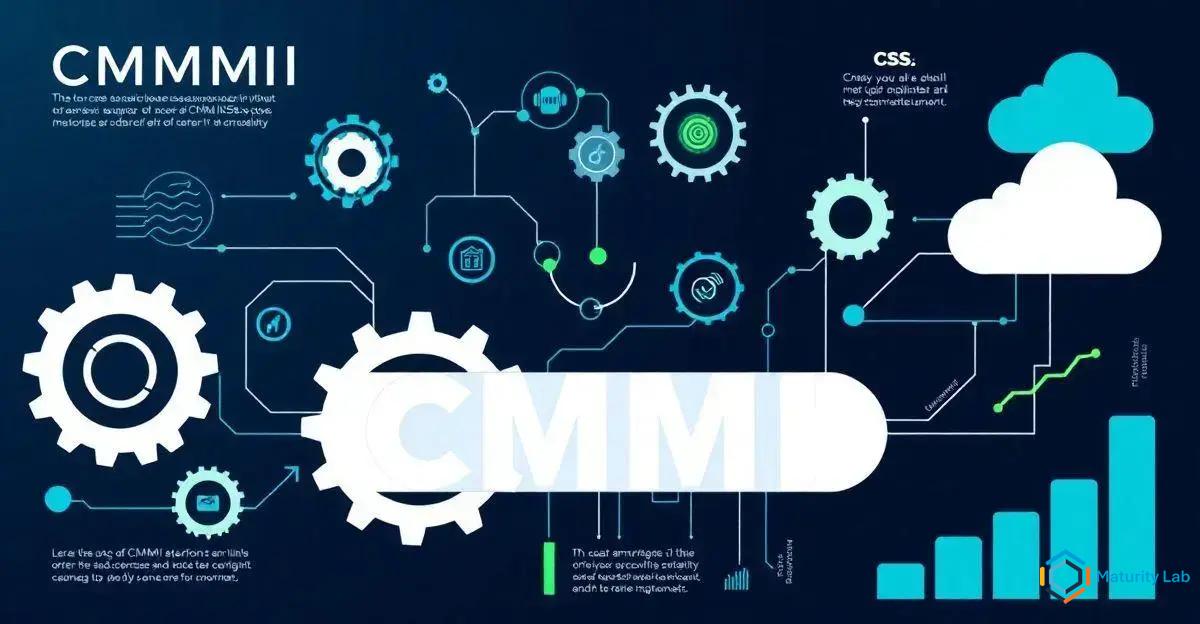Implementing CMMI in IT management improves process optimization by providing a structured framework for enhancing efficiency, quality, and alignment with business objectives. Key steps include assessing current processes, setting clear goals, training personnel, and forming a process improvement team. Success is evaluated through metrics such as process efficiency, defect rates, cycle time, and customer satisfaction, fostering continuous improvement to keep IT processes competitive and responsive to market needs.
In today’s competitive business landscape, achieving excellence in IT management is crucial for organizational success. The Capability Maturity Model Integration (CMMI) plays a pivotal role in enhancing IT management by providing a structured framework for process optimization. By integrating CMMI into IT management practices, organizations can streamline processes, improve efficiency, and achieve higher levels of performance. This article explores the significance of CMMI in IT management, the role of process optimization, and practical strategies for implementation.
Understanding CMMI in IT Management

Understanding the Capability Maturity Model Integration (CMMI) in the context of IT management is essential for organizations aiming to enhance their process capabilities and achieve superior performance.
CMMI is a process level improvement training and appraisal program that helps organizations refine their processes. It provides a comprehensive framework that guides businesses in developing effective practices across various domains, including software engineering, systems engineering, and IT management.
CMMI in IT management focuses on improving the processes that are critical to delivering high-quality IT services. By adopting CMMI, organizations can assess their current process maturity levels and identify areas that require enhancement. The model comprises five maturity levels, each representing a different stage of process development, from initial to optimizing. This structured approach enables organizations to systematically improve their processes, ensuring consistency and efficiency in IT operations.
Benefits of CMMI in IT Management
One of the key benefits of implementing CMMI in IT management is the ability to align IT processes with business objectives. By doing so, organizations can ensure that their IT strategies support overall business goals, leading to improved decision-making and resource allocation. Furthermore, CMMI facilitates better risk management by identifying potential process weaknesses and providing a roadmap for addressing them.
Moreover, CMMI encourages a culture of continuous improvement within organizations. By regularly evaluating and refining processes, businesses can adapt to changing market conditions and technological advancements, maintaining a competitive edge. This proactive approach not only enhances process efficiency but also fosters innovation and agility in IT management.
In conclusion, understanding CMMI in IT management is crucial for organizations seeking to optimize their processes and achieve excellence in service delivery. By leveraging the structured framework provided by CMMI, businesses can enhance their process capabilities, align IT strategies with business objectives, and foster a culture of continuous improvement.
The Role of Process Optimization in CMMI

Process optimization plays a pivotal role in the successful implementation of the Capability Maturity Model Integration (CMMI) within organizations, particularly in the realm of IT management.
CMMI emphasizes the importance of refining and enhancing processes to achieve higher levels of maturity and efficiency. This focus on process optimization is integral to realizing the full potential of CMMI and driving organizational success.
At its core, process optimization involves analyzing existing processes to identify inefficiencies, redundancies, and bottlenecks. By systematically addressing these issues, organizations can streamline operations, reduce costs, and improve overall performance. In the context of CMMI, process optimization is a continuous journey that aligns with the model’s maturity levels, guiding organizations from initial, ad-hoc processes to well-defined, optimized practices.
Enhancing Process Capability
One of the primary objectives of process optimization within CMMI is to enhance process capability. By doing so, organizations can achieve more predictable outcomes, improve quality, and deliver services more efficiently. This is particularly important in IT management, where the rapid pace of technological change demands agile and responsive processes. Optimized processes enable IT teams to adapt quickly to new challenges and opportunities, maintaining a competitive edge in the market.
Furthermore, process optimization in CMMI fosters a culture of continuous improvement. By regularly evaluating and refining processes, organizations can ensure that they remain aligned with evolving business goals and industry standards. This proactive approach not only enhances operational efficiency but also encourages innovation and creativity within teams. Employees are empowered to identify areas for improvement and contribute to the organization’s success.
In addition, process optimization supports effective risk management. By identifying potential process weaknesses and implementing corrective measures, organizations can mitigate risks and enhance their resilience. This is particularly crucial in IT management, where the consequences of process failures can be significant.
In summary, process optimization is a fundamental component of CMMI, driving improvements in process capability, efficiency, and risk management. By embracing a culture of continuous improvement and leveraging the structured framework of CMMI, organizations can achieve higher levels of maturity and performance in IT management.
Implementing CMMI for Enhanced IT Management

Implementing the Capability Maturity Model Integration (CMMI) for enhanced IT management is a strategic endeavor that requires careful planning and execution.
CMMI provides a structured framework that organizations can use to improve their IT processes, leading to increased efficiency, quality, and alignment with business objectives.
The implementation of CMMI involves several key steps that organizations must follow to realize its full benefits.
Firstly, it is essential to conduct a thorough assessment of the current IT processes. This involves evaluating the existing maturity level and identifying areas that require improvement.
By understanding the current state, organizations can develop a tailored implementation plan that addresses specific needs and objectives. This initial assessment sets the foundation for a successful CMMI implementation.
Once the assessment is complete, organizations should focus on defining clear goals and objectives for the CMMI implementation.
These goals should align with the overall business strategy and address the identified areas for improvement. By setting measurable objectives, organizations can track progress and ensure that the implementation delivers tangible benefits.
Training and education are critical components of the CMMI implementation process.
Employees at all levels should be educated about CMMI principles and practices to ensure a shared understanding and commitment to process improvement.
This includes training IT teams on specific CMMI processes and methodologies that are relevant to their roles.
By fostering a culture of learning and development, organizations can empower employees to contribute to the success of the implementation.
Another important aspect of implementing CMMI is the establishment of a process improvement team.
This team is responsible for overseeing the implementation, monitoring progress, and making necessary adjustments.
The team should include representatives from various departments to ensure a holistic approach to process improvement.
By involving key stakeholders, organizations can facilitate collaboration and buy-in across the organization.
Finally, organizations should continuously monitor and evaluate the effectiveness of the CMMI implementation.
This involves regularly reviewing process performance, identifying areas for further improvement, and making necessary adjustments.
By maintaining a focus on continuous improvement, organizations can ensure that their IT processes remain aligned with evolving business needs and industry standards.
In conclusion, implementing CMMI for enhanced IT management is a comprehensive process that requires careful planning, training, and continuous evaluation.
By following a structured approach and fostering a culture of continuous improvement, organizations can achieve significant improvements in process efficiency, quality, and alignment with business objectives.
Measuring Success: CMMI and Process Optimization Metrics

Measuring success in the context of Capability Maturity Model Integration (CMMI) and process optimization is a critical component of ensuring that the implementation efforts yield the desired outcomes.
Establishing clear and relevant metrics allows organizations to assess the effectiveness of their processes, identify areas for improvement, and demonstrate the value of CMMI initiatives to stakeholders.
To begin with, it is essential to define key performance indicators (KPIs) that align with the organization’s strategic objectives and the specific goals of the CMMI implementation.
These KPIs should be quantifiable, relevant, and actionable, providing a clear picture of process performance.
Common metrics used in CMMI and process optimization include process efficiency, defect rates, cycle time, and customer satisfaction.
By selecting appropriate KPIs, organizations can track progress and make informed decisions.
Process efficiency is a fundamental metric that evaluates the effectiveness of IT processes in delivering desired outcomes with minimal waste.
This metric helps organizations identify bottlenecks and areas where resources can be better utilized.
By optimizing process efficiency, organizations can reduce costs, improve service delivery, and enhance overall performance.
Defect rates are another critical metric in measuring the success of CMMI and process optimization efforts.
By tracking the number and severity of defects in IT processes, organizations can assess the quality of their outputs and identify areas for improvement.
Reducing defect rates leads to higher quality services, increased customer satisfaction, and a stronger competitive position.
Cycle time, which measures the time taken to complete a specific process or task, is also an important metric.
Shorter cycle times indicate more efficient processes and faster delivery of services.
By optimizing cycle time, organizations can respond more quickly to market demands and improve their agility.
Customer satisfaction is a key outcome metric that reflects the effectiveness of IT processes in meeting customer needs and expectations.
By regularly measuring customer satisfaction, organizations can gain valuable insights into the impact of their process improvements and identify areas for further enhancement.
In summary, measuring success in CMMI and process optimization involves defining and tracking relevant metrics that align with organizational goals.
By focusing on process efficiency, defect rates, cycle time, and customer satisfaction, organizations can assess the effectiveness of their CMMI initiatives, drive continuous improvement, and demonstrate value to stakeholders.
In conclusion, the implementation of the Capability Maturity Model Integration (CMMI) within IT management offers a structured pathway to process optimization and enhanced organizational performance.
By understanding the foundational principles of CMMI, organizations can align their IT processes with strategic business objectives, fostering a culture of continuous improvement.
The Role of Process Optimization
The role of process optimization is pivotal, as it drives efficiency, reduces costs, and enhances quality through systematic refinement of IT operations.
Implementing CMMI requires a comprehensive approach, involving thorough assessments, goal setting, training, and the establishment of dedicated process improvement teams.
Success is measured through well-defined metrics such as process efficiency, defect rates, cycle time, and customer satisfaction, which provide insights into the effectiveness of the initiatives.
Ultimately, by embracing CMMI and focusing on process optimization, organizations can achieve significant improvements in IT management, ensuring they remain competitive and responsive to evolving market demands.
Frequently Asked Questions about CMMI and IT Management
What is CMMI and how does it relate to IT management?
CMMI, or Capability Maturity Model Integration, is a framework that helps organizations improve their processes. In IT management, it provides structured guidance to enhance process efficiency, quality, and alignment with business objectives.
Why is process optimization important in CMMI?
Process optimization is crucial in CMMI as it helps streamline operations, reduce costs, and improve quality. It ensures that IT processes are efficient and capable of adapting to changes, which is essential for maintaining a competitive edge.
How can organizations implement CMMI effectively?
Effective implementation of CMMI involves conducting a thorough assessment of current processes, setting clear goals, providing training, establishing a process improvement team, and continuously monitoring progress to ensure alignment with business objectives.
What metrics are used to measure the success of CMMI and process optimization?
Key metrics include process efficiency, defect rates, cycle time, and customer satisfaction. These metrics help organizations assess the effectiveness of their CMMI initiatives and identify areas for further improvement.
How does CMMI contribute to continuous improvement in IT management?
CMMI fosters a culture of continuous improvement by encouraging regular evaluation and refinement of processes. This proactive approach ensures that IT processes remain aligned with evolving business needs and industry standards.
What are the benefits of aligning IT processes with business objectives through CMMI?
Aligning IT processes with business objectives through CMMI leads to improved decision-making, resource allocation, and risk management. It ensures that IT strategies support overall business goals, enhancing organizational performance and competitiveness.

